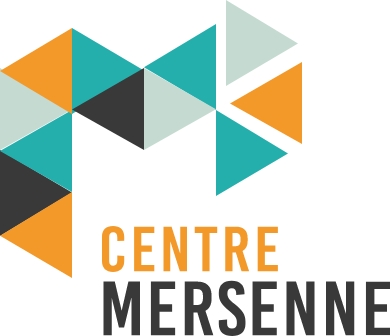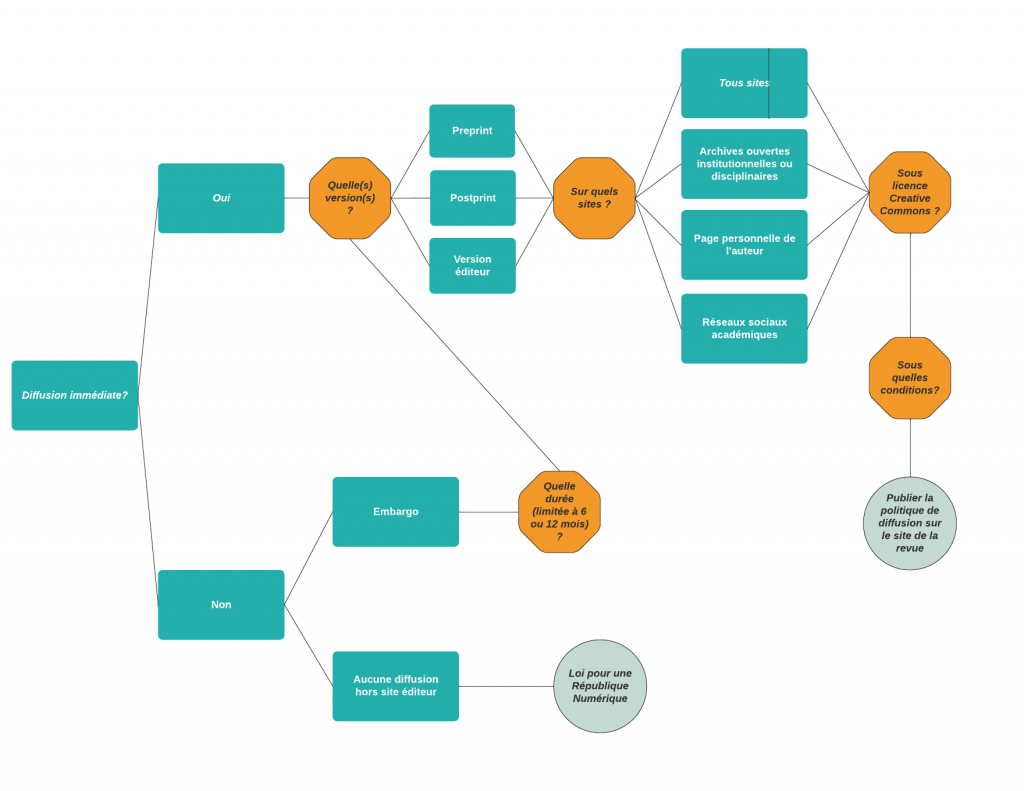It is important that your dissemination policy and your editorial policy are consistent. Therefore, it is important to consider your dissemination policy in a comprehensive way: the licence adopted by the journal and the policy for dissemination of articles in open archives.
What is a dissemination policy?
A journal’s dissemination policy defines the conditions for disseminating and sharing the articles it puts online: who can reuse them, under what conditions, under what licence, with the need to cite the source…
It is therefore a question of fixing the various elements: copyright, Creative Commons licence, self-archiving, etc.
It is now essential for any journal to formalise and display this distribution policy on its website. Various French and European measures, such as the various European calls for projects, now provide a framework for this approach and strongly encourage journals to form an open policy.
Elements of the dissemination policy:
- Free access, free or with APC;
- Access to all content, with or without embargo;
- Definition of the licence;
- Self-archiving policy: authorisation for authors to put their article (which version: preprint, postprint, final published version and under which licence) in a repository (which types of repository: institutional open repository, disciplinary open repository or any open repository, personal page, institutional website or academic social networks);
- Dissemination conditions imposed by the publisher: mandatory citation of the original publication, with or without a link to the page of the original article, to the DOI, to the URL of the article, licences applied to re-uses, etc.
Licence adopted by the journal
The choice of a Creative Commons license remains the choice of an author or a journal. However, it is sometimes necessary to take into account the impact of the choice of certain licences, such as the policy of funders or the admission criteria for certain referencing databases. See our article on this subject.
Dissemination policy
The dissemination policy defines the rights of authors to disseminate their productions. This information is important and should be included on the journal’s website. Defining its dissemination policy allows the journal to be indexed in Sherpa Romeo. In addition, it is important information for inclusion in the DOAJ.
Tools exist to help you draft your dissemination policy.
Mir@bel
Mir@bel offers a comprehensive academic pathway for journals wishing to achieve a thorough dissemination policy. Here is a summary of the key points.
Distribution policy template
Here is a dissemination policy template that you can include on your journal’s website. Simply delete any unnecessary entries:
Authors retain their full rights. Name of the journal allows authors to deposit their publication in open archives, with the co-authors’ consent.
Authors can submit all versions of their article, including the editor’s version/submitted version/approved version (delete as appropriate), without embargo, and provided that they indicate the URL to the original article.
Statement of dissemination policy
Journals should post their dissemination policy at least on the journal’s website. It is recommended to also list it on the Sherpa Romeo website. In the “Contact” section of this site, a form allows you to propose a new journal and its distribution policy.
You can also declare your distribution policy on the Mir@bel website, which will then automatically transmit your information to Sherpa Romeo.
Laws of the French Digital Republic
Article 30 of Loi n°2016-1321 du 7 octobre 2016 pour une République numérique states:
“Art. L. 533-4.-I.- When a scientific paper that results from a research activity financed at least by half by government funding, local authorities or public establishments, by grants from national funding agencies or by European Union funds, is published in a journal issued at least once a year, its author has, even after having granted exclusive rights to a publisher, the right to make available, free of charge in an open format, by digital means, subject to the agreement of any co-authors, the final version of his manuscript approved for publication, provided that the publisher itself makes it available free of charge by digital means or, failing that, on expiry of a period starting from the date of the first publication. This period is a maximum of six months for a publication in the field of science, technology and medicine and twelve months in the field of human and social sciences”.



